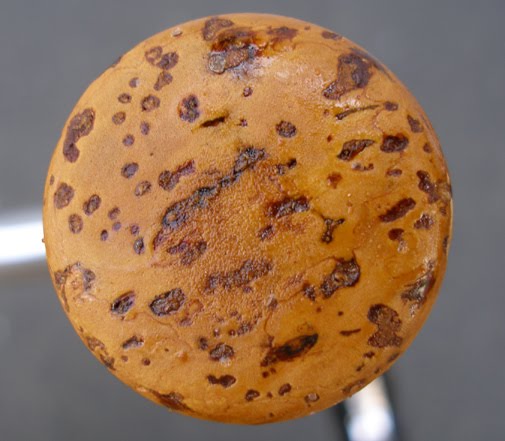


Cork comes from the cork tree (Quercus suber), a species of oak that grows in Spain and Portugal, which naturally grows to form 14-sided cells in the bark. The harvesting process involves carefully removing strips (it's in their best interest to keep the tree healthy), drying the strips for 6 months, boiling them for 90 minutes, and then again drying for three weeks. Once the trees are about 25 years old the cork is stripped from the trunks every nine years and trees can live up to 170 years.
The sustainability of production and the easy recycling of cork products and by-products are two of its most distinctive aspects... even though only 40% of this final cut ends up being usable.
Back to bikes... Rivendell Bicycle Works sells Miesha's Portuguese Tree Cork Grips which fits onto any 22.2mm bar. In typical Rivendell style, you can read about the history/evolution of these grips on their site. (They recommend using shellac to seal and weatherproof which does appear to make them orangey yellow.)
And for your road bike, Rivendell offeres "Cork" Handlebar tape "look alike cork tape that looks very much like real natural cork, but isn't"





if you love cork and bicycles check out my helemt concept here:
ReplyDeletehttp://www.core77.com/blog/object_culture/youd_look_hotter_in_a_helmet_10036.asp
Thanks!